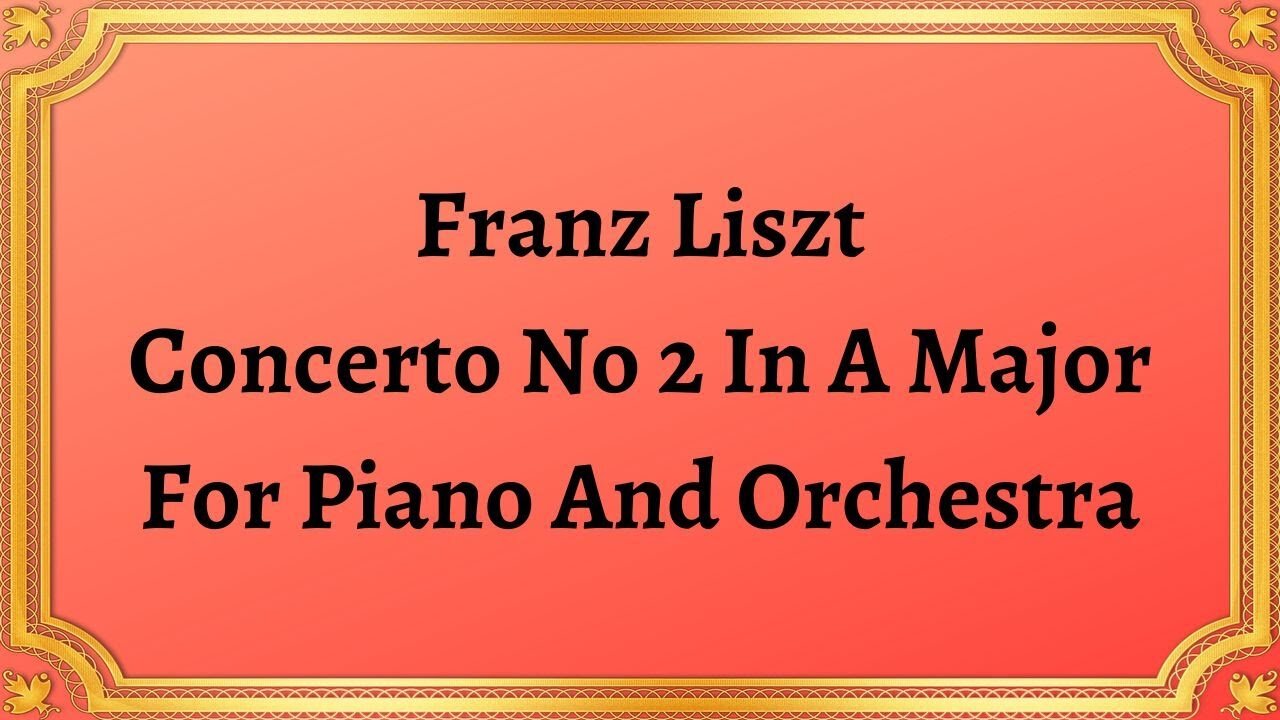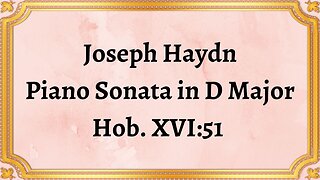Premium Only Content

Franz Liszt Concerto No 2 In A Major For Piano And Orchestra
Publication date 1949
Malcuzynski, piano, and
The Philharmonia Orchestra
conducted by Walter Susskind
Franz Liszt's Concerto No. 2 in A Major for Piano and Orchestra is a monumental work that showcases the composer's virtuosity, innovation, and emotional depth.
Liszt composed his Concerto No. 2 in A Major between 1839 and 1840, during his most prolific and revolutionary period. This concerto, along with his other piano concertos, marks a significant departure from traditional concerto forms of the time. Liszt's intention was to elevate the piano's role beyond a mere accompaniment to the orchestra, placing it on an equal footing as a solo instrument.
The concerto consists of four movements:
a) Adagio sostenuto assai – Allegro agitato: The concerto begins with a lyrical and introspective introduction that gradually builds tension, leading to a virtuosic and dramatic Allegro agitato section.
b) Allegro moderato: This movement showcases Liszt's technical brilliance and features contrasting themes that intertwine seamlessly, creating a sense of vibrant energy.
c) Allegro deciso: The third movement introduces a lively and spirited theme, characterized by rhythmic vitality and captivating melodies.
d) Marziale un poco meno allegro – Allegro animato: The final movement is a tour de force, combining the heroic and triumphant elements with dazzling piano passages and intricate orchestral interplay.
Liszt's Concerto No. 2 is renowned for its demanding piano passages, showcasing the composer's extraordinary technique and innovative use of the instrument. The soloist's fingers navigate lightning-fast scales, arpeggios, and intricate runs, captivating audiences with their brilliance and dexterity.
Liszt's harmonic language in this concerto pushes boundaries, incorporating daring chromaticism, lush chord progressions, and unexpected modulations. These harmonic choices create a sense of emotional intensity, showcasing Liszt's forward-thinking approach to composition.
Liszt's Concerto No. 2 evokes a range of emotions, from tender lyricism to passionate intensity. The contrasting themes and dynamic shifts provide moments of introspection, drama, and sheer exhilaration, allowing the soloist to showcase both technical prowess and interpretive sensitivity.
Liszt's Concerto No. 2 in A Major has had a profound and lasting impact on the classical music world. Its innovative blending of virtuosity, emotional depth, and symphonic grandeur influenced subsequent generations of composers, such as Sergei Rachmaninoff and Béla Bartók. This concerto solidified Liszt's reputation as a leading figure in piano composition and performance, paving the way for the development of the Romantic piano concerto genre.
Franz Liszt's Concerto No. 2 in A Major for Piano and Orchestra is a remarkable musical masterpiece that exemplifies the composer's technical brilliance, harmonic ingenuity, and expressive depth. Its historical significance, intricate structure, and emotional power continue to captivate audiences and inspire musicians worldwide. By delving into the depths of this concerto, we gain a profound appreciation for Liszt's genius and his immeasurable contribution to the classical
-
 6:07
6:07
Classical music_Music Inspiration
22 days agoJoseph Haydn Piano Sonata in D Major, Hob. XVI:51
701 -
 LIVE
LIVE
Vigilant News Network
11 hours agoBombshell Study Reveals Where the COVID Vaccine Deaths Are Hiding | Media Blackout
2,016 watching -
 1:17:59
1:17:59
Sarah Westall
6 hours agoDOGE: Crime & Hysteria bringing the Critics & the Fearful - Plus new CDC/Ukraine Crime w/ Dr Fleming
26.4K3 -
 45:39
45:39
Survive History
12 hours ago $3.33 earnedCould You Survive in the Shield Wall at the Battle of Hastings?
26.6K5 -
 1:50:28
1:50:28
TheDozenPodcast
11 hours agoViolence, Abuse, Jail, Reform: Michael Maisey
71.4K2 -
 23:01
23:01
Mrgunsngear
1 day ago $4.23 earnedWolfpack Armory AW15 MK5 AR-15 Review 🇺🇸
64.9K12 -
 25:59
25:59
TampaAerialMedia
1 day ago $2.01 earnedUpdate ANNA MARIA ISLAND 2025
38.3K3 -
 59:31
59:31
Squaring The Circle, A Randall Carlson Podcast
13 hours ago#039: How Politics & War, Art & Science Shape Our World; A Cultural Commentary From Randall Carlson
29.9K2 -
 13:21
13:21
Misha Petrov
13 hours agoThe CRINGIEST Thing I Have Ever Seen…
23.8K49 -
 11:45
11:45
BIG NEM
9 hours agoWe Blind Taste Tested the Best Jollof in Toronto 🇳🇬🇬🇭
16K